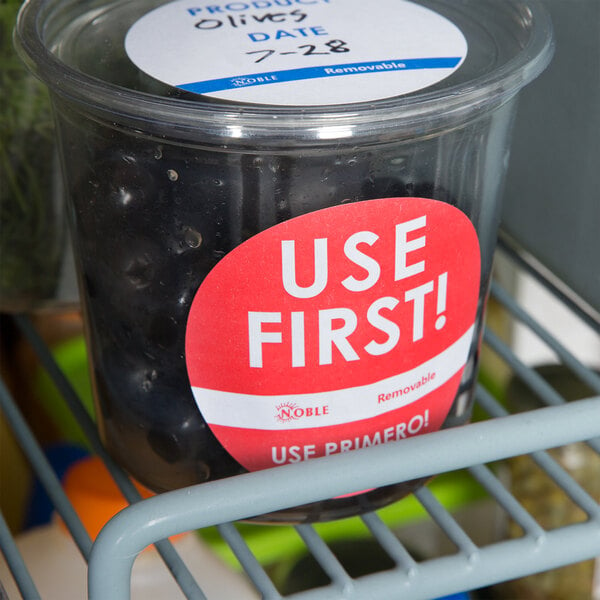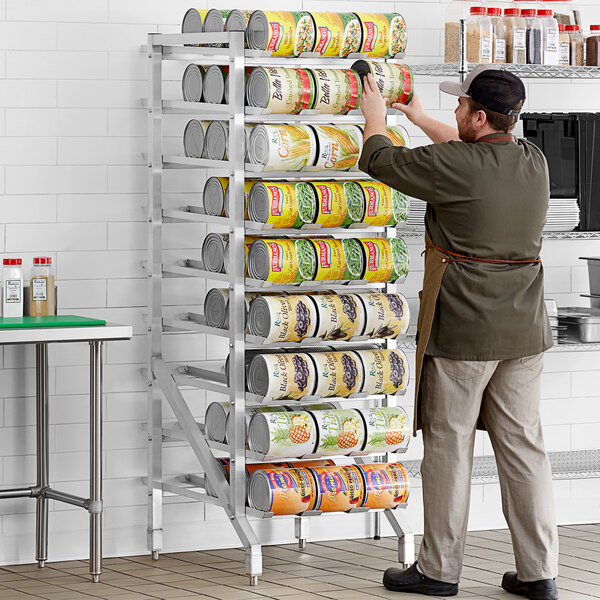
When managing a commercial kitchen, implementing the FIFO method is essential. FIFO is an inventory control method in which the first items that come into your facility are the first to leave. This method helps reduce waste, maintain food quality, and improve efficiency in your kitchen operations. By following FIFO practices, you can ensure that you properly store your food, optimize your storeroom space, and create a streamlined inventory management system.
What Does FIFO Stand For?
FIFO is an acronym for "first in, first out." The FIFO method is all about storing and rotating stock to ensure items that have been there the longest are used or sold first. This term is commonly used in warehouses, distribution centers, and foodservice operations for inventory management to reduce the risk of spoilage or waste. By following FIFO, businesses can maintain product quality, minimize losses, and optimize their inventory management processes.
Following the FIFO method requires proper organization and labeling of products. This involves marking the date of receipt or production on each item, as well as arranging them in a way that allows for easy access to the oldest items. By doing so, food workers can easily identify and retrieve the products that need to be used or sold first, ensuring that they are not overlooked or wasted.
FIFO Inventory Method
Use our video tutorial to learn how to integrate the FIFO inventory method in your foodservice establishment.
How to Use the FIFO Method to Store and Restock Food
Properly storing food using the FIFO method involves arranging items based on expiration dates. Place products with the closest use-by or expiration date at the front of the stock line for immediate use. Arrange newer items at the back of the line behind older ones. When rotating stock, regularly check the expiration dates to ensure the items are still safe to use.
Follow the below FIFO rules to maintain freshness, reduce waste, and enhance food safety practices in your establishment.

- Keep like items stored together: Organizing similar food items together, whether in your storage area or on your store shelves, simplifies rotation and inventory management. Grouping like items together allows for quick identification and access when restocking or using them for food preparation purposes.
- Arrange items by their use-by date: Products in the same stock line should be arranged based on their best-by or expiration dates. This means placing items with the earliest expiration dates at the front of the storage area, allowing for quick identification and use before items with later expiration dates.
- Label items clearly: Establish a clear and consistent labeling system for prepped items and ingredients lacking an expiration date. Food rotation labels are great for identifying received dates, use-by dates, and other important product information. This practice ensures that staff can quickly identify which items to use first.
- Rotate stock regularly: Regularly check the expiration dates of products and rotate the stock accordingly. By moving older items to the front and newer items to the back, you can ensure that the oldest products are used first.
- Train staff: Educate your staff about the importance of FIFO and train them on how to read labels, rotate stock, and maintain the organization of storage areas.
- Monitor inventory levels: Keep track of inventory levels to prevent overstocking and guarantee that items are used before they expire. Conduct regular inventory checks to identify any discrepancies and adjust stock levels accordingly.
- Inspect deliveries: When receiving food deliveries, inspect the items for quality and expiration dates before storing them. This practice helps prevent the introduction of expired or damaged products into your inventory.
- Utilize shelving systems: Use restaurant shelving systems to create a well-organized storage area that facilitates easy access to items based on their arrival dates. Adjustable shelving units, can racks, and storage bins can keep items organized and visible for quick retrieval.
Why Is the FIFO Method Important?
The “first in, first out” rule is crucial for the stock rotation of dry, refrigerated, and frozen goods. It ensures that products do not spoil, so you do not lose money or risk serving customers expired or unsafe foods. We’ve broken down the key benefits of implementing the FIFO method:

- Minimizes Food Waste: FIFO helps prevent food spoilage and waste by ensuring that ingredients are used in the order they were received. It prevents older food items from being pushed to the back of the stock line, thus reducing the risk of them being forgotten or overlooked and ultimately minimizing product waste. Because your staff is routinely rotating stock, identifying food that is about to expire is easier. This reduces the likelihood of ingredients becoming unusable, ultimately saving money for the business.
- Enhances Food Safety: Rotating stock ensures ingredients are used at their peak freshness. FIFO reduces the chances of serving contaminated or expired food items to customers. By using older ingredients first, businesses can mitigate the risk of foodborne illnesses and uphold food safety standards.
- Optimizes Inventory Management: FIFO simplifies inventory management by providing a systematic approach to organizing stock. This method allows operators to track inventory levels accurately, identify slow-moving items, and prevent overstocking, leading to better inventory control.
Organization is key to maintaining FIFO. By establishing a well-structured system that stores and uses products in the order they are received, businesses can effectively adhere to the FIFO method. This approach helps prevent waste and spoilage and improves the flow of inventory. Proper organization of inventory shelves, clear labeling of products with expiration dates, and regular stock rotation are essential practices for successful FIFO implementation. Maintaining a systematic approach to inventory control will streamline operations and contribute to overall cost savings for businesses in the long run.





